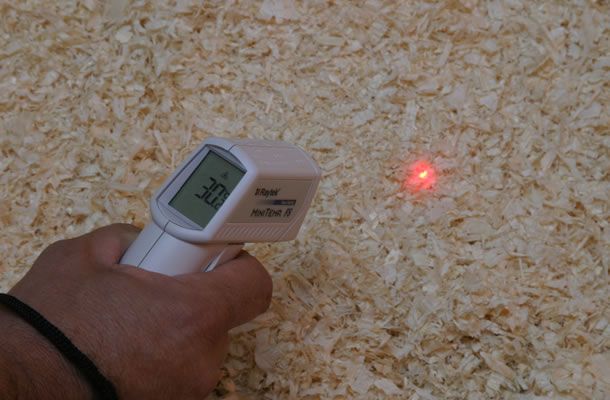The true cost of cold chicks
Tags: Chick handling | Blog
, March 24 2010

A while ago, I visited a day old broiler chick hatchery in Western Europe. The hatchery manager was having serious discussions with one of his clients, who found first week mortality in the chicks delivered from this hatchery to be too high. In the farmers’ opinion, the cause of mortality – often running as high as 3-4 per cent - must, he believed, lie with the hatchery as he was providing the best conditions for the broilers, especially during the first week of life.
Indeed, registrations of climate in the poultry house seemed fine. Feed and water were supplied via commonly used systems.
However mortality rates at other farms receiving chicks from the same breeder flocks were low to average, usually staying below one per cent. This though was little comfort to the farmer experiencing the losses. And as continuing discussion did not seem to be finding a solution, I offered to help in finding out what was going wrong.
I began on the day of hatch by closely monitoring chick quality and the chick collection process, observing the chicks in the dispatch room and registering the climate. This all appeared to be within acceptable limits. So next, I joined the chicks inside the truck during transportation to the farm. Climate inside the truck was registered as usual during the one hour drive and with temperature maintained at around 25°C, appeared satisfactory. On arrival at the farm, I observed the unloading of the chicks, together with the farmer and his wife and a farm employee.
At first sight, the poultry house looked good: the floor was equally covered by a 2 – 3 cm layer of wood shavings; feed and water supply were adjusted to the right height and light intensity and distribution was adequate. The measured temperature in the house was 34 °C. However, I also noticed that the temperature sensor was positioned at approx.1.3 meters above the floor.
Suspecting that a cold floor may be the reason for increased first week mortality, I placed a chick with its feet on the back of my hand - and indeed, its legs did feel cold. The farmer’s wife confirmed my observation by placing the chick’s feet against her cheek.
When registrations were taken directly from the floor itself, we recorded a temperature of 25°C, which is definitely too low for day old chicks.
After hatching, a chick’s thermoregulatory system is not yet fully matured, which means they have very little ability to regulate their own body temperature during the first 7-10 days of their lives. Consequently, environmental temperature has enormous impact of the chick’s own body temperature, which will be reduced accordingly. This costs the chick vital energy - and will impair both the health and growth of the chicks. Mortality then occurs as a result of various health problems, predominantly yolk sac infection, dehydration or starvation.
Based, however, on this practical evidence - the farmer agreed to increase floor temperature by preheating the poultry house for 36-48 hours before the chicks’ arrival. The chicks feel the cold of the floor through their bodies. And since chicks are in constant contact with the floor, the temperature of the floor is actually more critical to the chick’s body temperature than air temperature. Preheating the broiler house is therefore vitally important, especially in cold weather. It can be useful to preheat the broiler house with the litter, still packed, in the house. This will ensure that the concrete is warm before the litter is distributed on top of it.
Either placing a thermometer on the litter, or using an infrared non-contact thermometer, will accurately determine floor temperature, which should be around 28 – 30 ºC. Observing the chicks’ behaviour, especially during the first week, tells much about their comfort levels. If chicks huddle and stay down on the floor, house temperature must be increased. Simply feeling the temperature of their legs will indicate immediately whether they are chilled. Conversely, if they move away from heat sources and appear listless, they are probably too warm.
Happily for this farmer – and for a continuing relationship with the hatchery - after starting to preheat his broiler houses, the problems of first week mortality virtually disappeared, with mortalities decreased to around 0.4% in the first week.
The cost of poor brooding temperature to both the grower and the integrator are tremendous: 4 per cent mortality is more than 3 per cent above the acceptable maximum limit for first week mortality. In addition, and probably even more important, is that chicks who survive chilling will deliver inefficient growth. And this eventually will cost a great deal more.
Let’s assume a drop of 4 points FCR and a slaughter weight of 2.2 kg. If this drop can be avoided by creating proper brooding conditions, 88g of feed is saved per broiler. With 30,000 broilers in a house, this equates to 30,000 birds x 88g = 2,640kg of feed. For a farm with seven production rounds, this amounts to 7 x 2,640 = 18,480 kg of feed saved per year. If we then also take into account the adverse effects of poor brooding practice on chick uniformity - and the deductions the processors will levy on growers for birds outside the desired weight range - it is not hard to see how these effects easily justify the additional costs incurred by preheating.